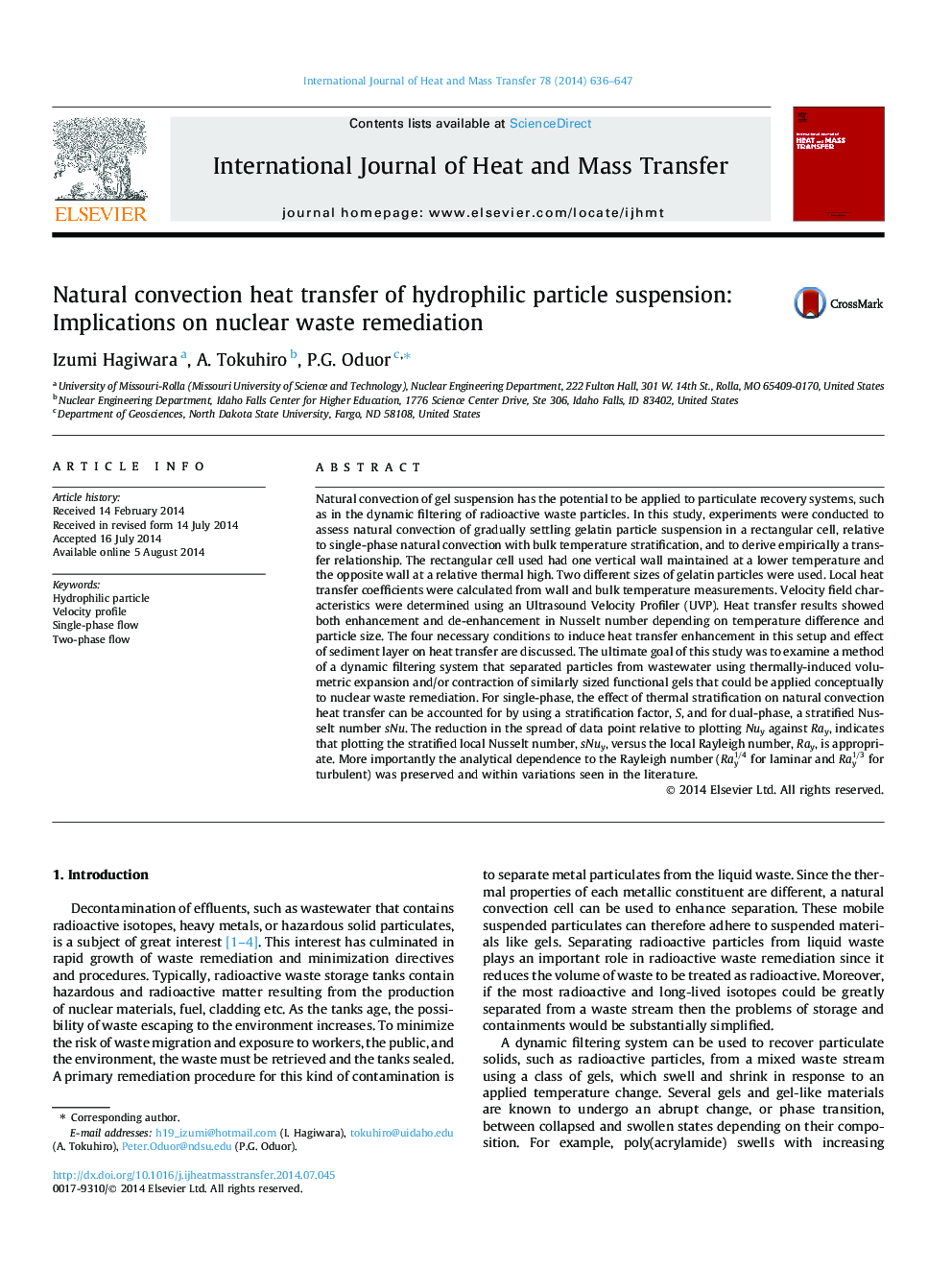| Article ID | Journal | Published Year | Pages | File Type |
|---|---|---|---|---|
| 657732 | International Journal of Heat and Mass Transfer | 2014 | 12 Pages |
Natural convection of gel suspension has the potential to be applied to particulate recovery systems, such as in the dynamic filtering of radioactive waste particles. In this study, experiments were conducted to assess natural convection of gradually settling gelatin particle suspension in a rectangular cell, relative to single-phase natural convection with bulk temperature stratification, and to derive empirically a transfer relationship. The rectangular cell used had one vertical wall maintained at a lower temperature and the opposite wall at a relative thermal high. Two different sizes of gelatin particles were used. Local heat transfer coefficients were calculated from wall and bulk temperature measurements. Velocity field characteristics were determined using an Ultrasound Velocity Profiler (UVP). Heat transfer results showed both enhancement and de-enhancement in Nusselt number depending on temperature difference and particle size. The four necessary conditions to induce heat transfer enhancement in this setup and effect of sediment layer on heat transfer are discussed. The ultimate goal of this study was to examine a method of a dynamic filtering system that separated particles from wastewater using thermally-induced volumetric expansion and/or contraction of similarly sized functional gels that could be applied conceptually to nuclear waste remediation. For single-phase, the effect of thermal stratification on natural convection heat transfer can be accounted for by using a stratification factor, S, and for dual-phase, a stratified Nusselt number sNu. The reduction in the spread of data point relative to plotting Nuy against Ray, indicates that plotting the stratified local Nusselt number, sNuy, versus the local Rayleigh number, Ray, is appropriate. More importantly the analytical dependence to the Rayleigh number (Ray1/4 for laminar and Ray1/3 for turbulent) was preserved and within variations seen in the literature.
